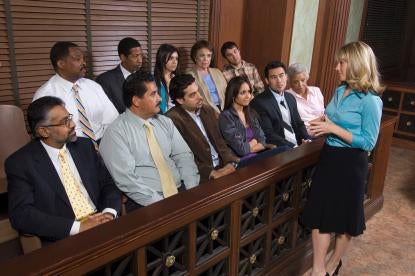On a few rare occasions, we’ve been asked by clients to facilitate a mock trial in collaboration with opposing counsel (and a jury consultant of their choice) to help each side better evaluate their respective positions in the case. The primary goals of such an exercise are to stimulate settlement negotiations and resolve the case without incurring the expense of trial.
However, there are some obvious drawbacks to this type of research:
-
For one, each side would essentially be showing their cards, providing opposing counsel the opportunity to adjust their strategy prior to the actual trial, should the parties be unable to resolve the case.
-
Second, in the absence of cause challenges and peremptories, what if the mock jurors end up having more biases against our client than would be expected from the actual jury? This could result in an overvaluation of the case and amount to shooting ourselves in the foot.
-
Third, we know that the outcomes of mock jury panels do not always predict the results at trial, due to the many differences between a condensed trial simulation and an actual trial with judicial rulings, lengthy testimony, and live witness examinations. How might those differences influence the juries’ findings?
Given these (and other) factors, we understand why attorneys may be reluctant to try the collaborative mock trial approach. However, in one recent trial, a creative Dallas County District Court judge’s suggestion ended up dispelling at least one of these concerns.
Mock Jurors from the Actual Jury Panel
In the hopes of helping the parties reach a settlement agreement, the judge suggested that each side retain four additional jurors to hear the parties’ opening statement and independently complete the verdict form. He proposed that once the actual jury and true alternates were selected, each side would have one peremptory strike to use on the next six jurors. The four who remained would become the mock jurors.
These mock jurors would receive the opening instructions, sit through opening statements, and then be instructed on the law related to the claims in the case while the actual jury was on a break. They would each fill out their own verdict form, which would be provided only to counsel. The judge would not know the results of their verdicts.
Pros and Cons
With only a few minutes to decide whether to accept the judge’s proposal, we briefly evaluated the pros and cons of this approach:
-
If the mock jurors came back with defense verdicts or very low damage awards, this could encourage the plaintiffs to drop their demand significantly. Alternatively, if the mock jurors came back with large verdicts, this could prevent the plaintiffs from lowering their demand during trial. Since it seemed unlikely the demand would drop after the jury was seated, we decided these factors leaned in favor of agreeing to the exercise.
-
We also had concerns that our client might put too much weight on the results and raise its settlement offer unnecessarily, or that a bad result might shake up or deflate the trial team. However, we talked through the caveats of such a test— namely that the mock jurors’ decisions would be wholly independent of the trial testimony (which we expected to be favorable to the defense). Both the client and the attorneys agreed they would take the results with a massive grain of salt.
-
The last major thing to consider was whether we wanted to address damages in the opening statement. This was something our attorneys weren’t planning to do, but if plaintiffs’ counsel argued damages and the defense failed to respond, this could falsely inflate the mock jurors’ damages. Once again, we didn’t see much downside to this, even if the mock jurors returned a large verdict.
In the end, both sides agreed to the judge’s proposal—in part to show him that we were making a good-faith effort to resolve the case, but also because it was an intriguing proposition that seemed relatively harmless.
The Outcome
To the judge’s disappointment, the exercise did not result in the parties reaching a settlement. Ultimately, the actual jury returned a verdict assigning 20% liability to the defense, a total of $85,000 in damages (amounting to an award of only $17,000 from our client), and no finding of willfulness or misrepresentation.
But most interesting of all were the uncanny similarities between the mock jury responses and the actual verdict—the mock jurors had all come up with 20% to 30% liability, and total damages ranged from $30,000 to $80,000 (i.e., $9,000 to $16,000 from our client).
Could it be merely a coincidence, or was this judge really onto something?
If we can approximate the value of a case merely from opening statements, does that suggest most jurors have their minds made up at that point? Or did the attorneys present their openings differently than they otherwise would have, knowing that some jurors would be making a decision before seeing any actual evidence?
At a minimum, these findings underscore the importance of the opening statement and open the door for a discussion on the value of this unique approach.
Final Thoughts
Few things surprise us in this line of work, but this experience ended up being a trial to remember, and it warrants consideration of whether we might propose such an exercise to judges and opposing counsel in the future.




 />i
/>i

